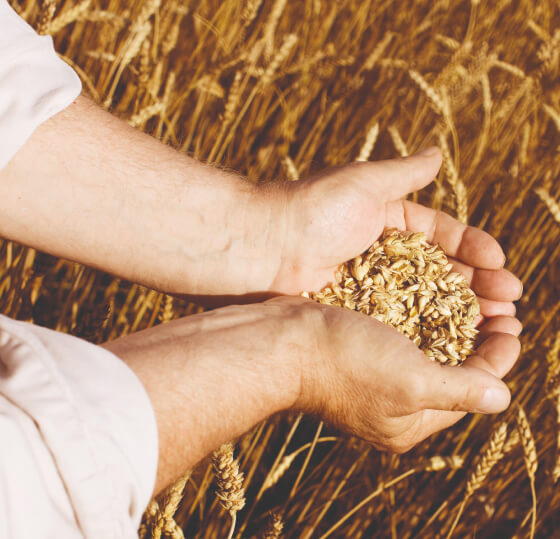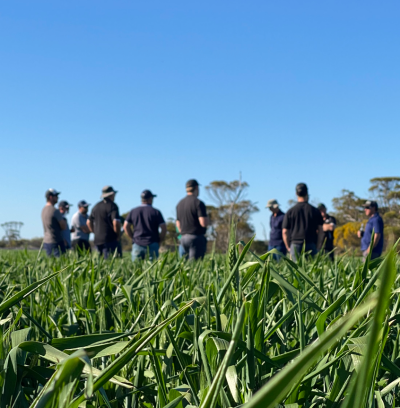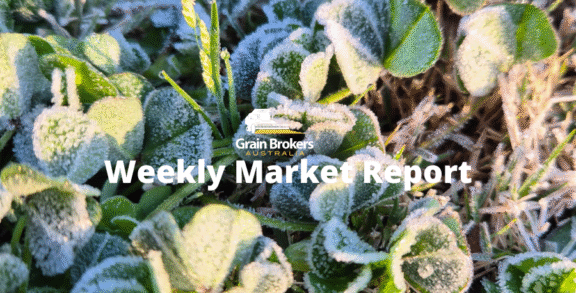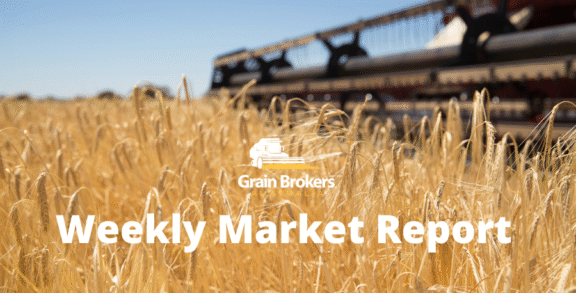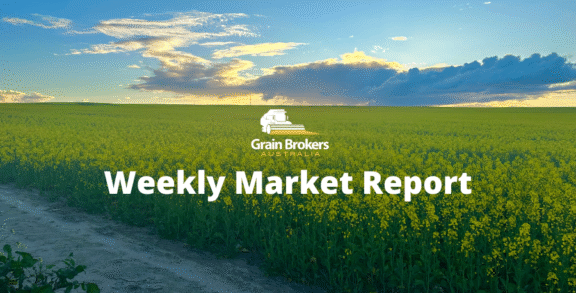
Statistics Canada updated this season’s planted area estimates for the nation’s principal field crops on Friday of last week, with grain growers reporting an increase in wheat, oats, soybeans, lentils, corn and dry pea seeding in 2025, but a decrease in the area allocated to canola and barley.
Canadian farmers faced ideal planting conditions with warm and dry weather experienced across much of western Canada after sowing commenced in late April. Seeding reportedly progressed ahead of the five and ten-year averages for all three Prairie provinces, with a majority of the 2025 program completed before the end of May.
However, while the vegetative health of the Prairies crops is currently better than the same date in either of the past two seasons, the lack of rain and poor soil moisture remains a concern for grain producers in many regions. In the Eastern provinces of Ontario and Quebec, temperatures were at or below normal early in the growing season and precipitation was above average, but the cool and wet conditions did result in seeding delays in some districts.
The June 2025 Field Crop Survey, which collects information on field crop seeded areas in Canada, was conducted between May 15 and June 12, 2025, and included approximately 25,000 individual farms. Respondents were asked to report their seeded areas of grain, oilseeds and special crops.
Despite ongoing trade issues with the United States and China, as well as increasing soil moisture concerns, domestic grain merchants had reportedly been expecting the rally in canola futures leading into and throughout this year’s planting window to encourage an increase in the canola area in 2025.
However, when the numbers were revealed, the allocation of 8.68 million hectares was 2.5 per cent lower than last year’s area of 8.91Mha and 2.9 per cent below the 8.94Mha planted in 2023. In Saskatchewan, where more than half of the nation’s canola is grown, farmers reported a year-on-year decrease in seeding of 0.5 per cent to 4.86Mha. In Alberta, the survey results revealed a planted area decline of 2.8 per cent to 2.51Mha, while in Manitoba, the seeded expanse of 1.21Mha is down 9.2 per cent compared to 2024.
Assuming 99 per cent of the planted area is eventually harvested pegs production in 2025 at 17.8 million metric tonne, compared to a harvest of 17.85MMT last year and 19.19MMT in 2023. This was determined by adopting the canola yield forecast of 2.07 metric tonne per hectare from the latest Outlook for Principal Field Crops report, which was released on June 20. The report assumes normal growing conditions for the balance of the season.
Canadian farmers reported a total wheat area of 10.91 million hectares this season, one per cent higher than the 2024 area of 10.78Mha but 0.2 per cent less than the 10.92Mha sown in 2023. Spring wheat is the largest component of the wheat acreage each season, and it fell to 7.61Mha, compared to 7.67Mha and 7.89Mha in 2024 and 2023, respectively. Conversely, the durum wheat seedings increased by 2.6 per cent to 2.64Mha, as did the winter wheat area, which was planted last autumn and came in 18.2 per cent higher at 750,000 hectares.
The Saskatchewan farmer reported total wheat plantings of 5.67Mha, 1.1 per cent lower than last year, with spring wheat down and durum up. Farmers in Alberta raised plantings by 3.2 per cent to 3.28Mha, with a swing to durum wheat the big driver, while the wheat allocation of 1.34Mha in Manitoba was 1.9 per cent higher year-on-year.
On the wheat production front, the June 20 crop outlook suggested that an average wheat yield of 3.18 MT/ha was currently achievable for the 2025 harvest, compared to 3.28 and 3.08 MT/ha for the previous two seasons. Assuming a harvested area of 10.75Mha, output from this year is likely to be 34.2MMT. This would represent a decline of 2.2 per cent compared to the 2024 harvest of 34.96MMT but 3.8 per cent higher than the 32.95MMT reaped in 2023.
Barley continues to lose favour amongst Canada’s farmers, with the planted area in 2025 falling for the fourth consecutive year to 2.48Mha. This is down from 2.59Mha in 2024, 2.97Mha in 2023, and the recent peak of 3.37Mha in 2021. Alberta led the way, down 5.7 per cent to 1.34Mha, followed by Saskatchewan which was 2.6 per cent lower at 930,000 hectares.
Historically, Canadian farmers usually harvest around 92 per cent of the planted area each season. Applying that ratio to the principal crop outlook yield estimate of 3.48MT/ha puts this season’s production estimate at 7.94MMT, down from 8.14MMT last harvest and 8.91MMT the harvest prior.
Contrary to barley, oats appear to be regaining favour amongst the nation’s farmers, with plantings rising for the second consecutive year after falling dramatically in 2023. According to the survey, the seeded area increased 3.3 per cent to 1.21Mha this year, 18.2 per cent higher than in 2023 but 23.9 per cent lower than in 2022. Using a harvested area of 1Mha and a yield of 3.38MT/ha currently puts this season’s output estimate at 3.38MMT.
Lentils and dry peas are the two main pulse crops in Canada each season, with significant increases reported for both in the farmer survey results. The lentil allocation has risen by 4 per cent in 2025 to 1.77Mha, which follows a 14.8 per cent increase last year. The dry pea area has reportedly increased by 9.1 per cent to 1.38Mha. Lentil and dry production are estimated at 2.43MMT and 3MMT, respectively.
In the row-crop arena, the soybean area is forecast to increase by 0.5 per cent to 2.32Mha, resulting in production of 7.38MMT, assuming a yield of 3.18MT/ha. The corn area is expected to be 2.2 per cent above the 2024 level at 1.51Mha, with an estimated yield of 10.1MT/ha generating potential output of 14.95MMT from the autumn harvest.
Call your local Grain Brokers Australia representative on 1300 946 544 to discuss your grain marketing needs.
Written by Peter McMeekin.
